Why teach your child to draw? Why is drawing good for him? How can I get him to love drawing? Our team Kidlee shares her tips for teaching children to draw from an early age.
The benefits of drawing
- Focus: Drawing unconsciously enables the child to focus on his activity. They stop being distracted and concentrate on their work.
- Stimulation of the imagination and creativity: By drawing freely, without rules or limits, he stimulates his imagination and creativity while having fun!
- Development of motor skills: From the age of 2, his tracings become more precise, and he develops his vision and muscles. Gradually, he develops his gesture coordination and becomes more precise. Around age 3, he improves his hand-eye coordination and will find it easier to draw shapes.
- Drawing is the first step towards writing: the more he develops his fine motor skills, the better his pencil control will be, which will help him learn to write!
- Self-confidence and emotional expression : By drawing, children can affirm their character. Drawing enables them to express themselves, their joy, their worries, their anger, their sadness... With practice and patience, they'll learn to produce the drawings they have in mind, and even reproduce the reality they want to put down on paper.
Discover our article: children's self-confidence: how can we help them build their self-confidence?
Teaching your child to draw
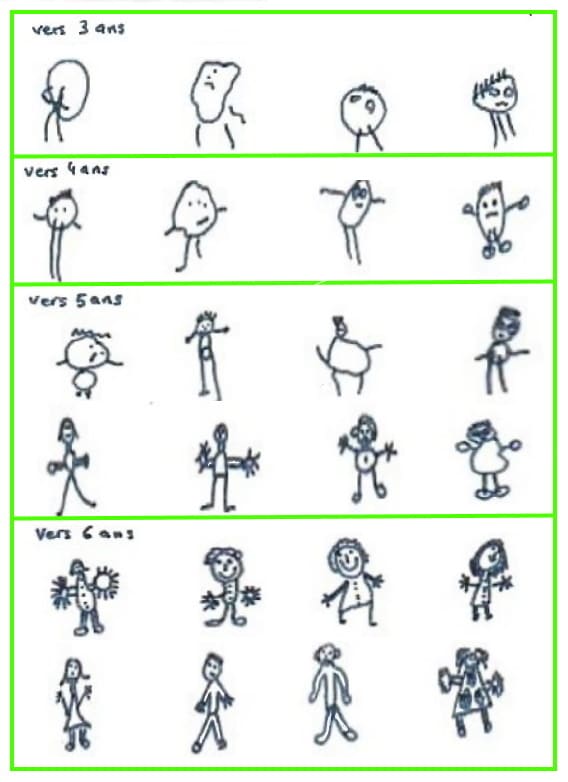
Art cannot be corrected!
Before the age of 6, children don't need instructions, only appreciation. Teaching your child to draw means avoiding correcting them and constantly telling them what to draw. As they're still young, they may find it difficult to do what you've asked them to do, and this will only frustrate them. Let him discover the pleasure of drawing, mastering the tools and creating with his little fingers whatever he wants. Avoid interrupting his natural learning process and asking him to draw things he can't yet do. At first, he draws spirals and squiggles, which train him to hold the pen properly. The more he refines his gestures, around age 3, he'll be able to give meaning to his drawings. Finally, around age 4, he'll want to draw precise ideas.
Exchange around the drawing
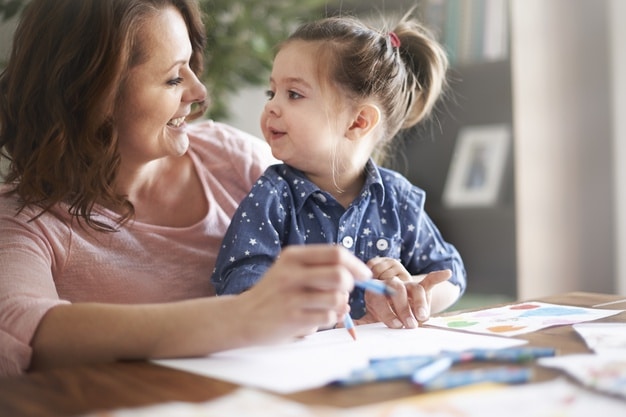
Ask questions that will lead him to interpret his drawing. Your questions can be focused on details that will catch their attention and prompt them to look further into the next drawing.
Ask him to explain the drawing: did he draw a little girl? Under the sun? You can ask him questions like: isn't she too hot in the sun? This will lead him to draw a hat or even a glass of water...
At this age, the child also draws what is called a "tadpole man", which is a man with a big head and a bulging body, with 3 or 4 lines supposed to represent legs or arms. As he grows, he will add more and more details and life to his man!
Teaching a child to draw is above all teaching him to connect art to emotion

Drawing is a major form of expression in their development. Drawing allows them to develop their emotional intelligence. Suggest to your child that he/she express his/her emotions through a drawing. Drawing will then be an escape from their childhood torments and whims. In other words, drawing allows the child to channel his emotions and clear his mind. Sometimes, expressing oneself through drawing can be easier than through words.
Enhance your drawings
Around age 4, children start to want to represent the visuals they know. They'll start to want to draw something beautiful, or they'll want to make a specific drawing! This is where you come in! In addition, always congratulate and encourage him, and make him feel that his drawings are important. Add value to his work by hanging up his beautiful drawing. On the one hand, this encourages him to continue, and on the other, it boosts his self-confidence. From the age of 5 onwards, children become more skilled at adding detail and realism to their works of art, so suggest they keep a drawing book. On the one hand, this will give him a boost to his imagination, and on the other, it will centralize his work and enable him to tell a longer story than a single drawing!
Teaching a child to draw means drawing together!
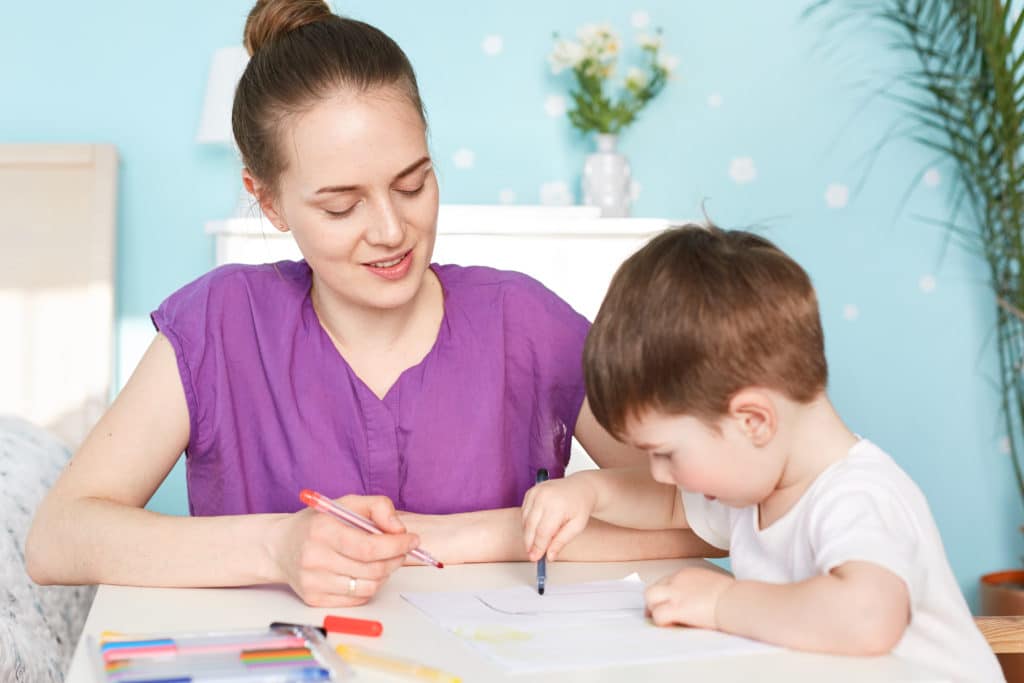
Surprise your little ones with creative workshops together! Show them how much you care about creativity. Even if you're not the world's greatest artist! This won't detract from the beautiful image your child perceives. The image of a parent who expresses his or her creative interest and conveys a message of joy and passion. And let's not forget that drawing is an enjoyable exercise for young and old alike!
Sharpen his sense of observation
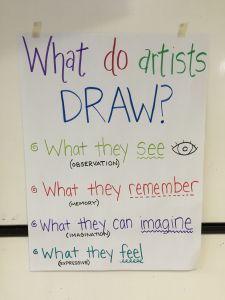
Basically, to learn to draw, children rely on what they know about objects to reproduce them in drawings, rather than reality. Invite them to look at reality from different angles to see different points of view and explore new drawing possibilities.
Drawing sessions in different ways:
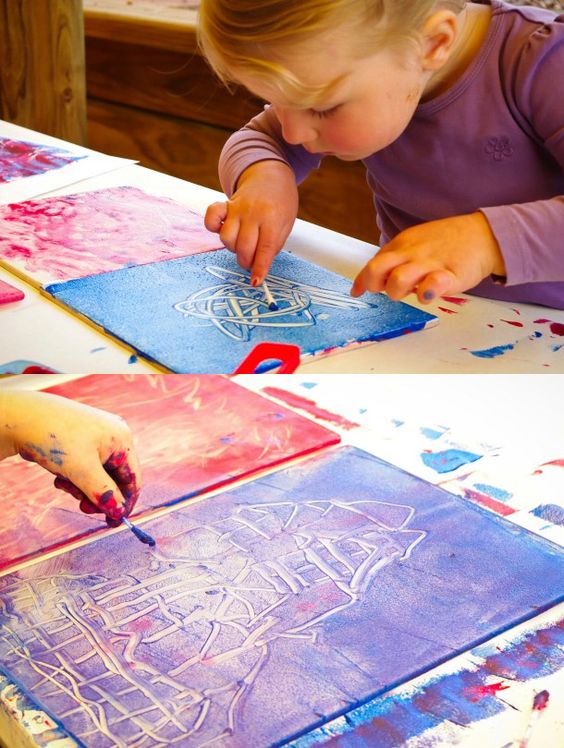
Offer him a variety of age-appropriate tools, such as colored pencils, watercolors, paint... Invite him to draw on different surfaces, such as a sheet of paper, a chalkboard, a slate... This will help him discover more materials and stimulate his imagination. It's also a good way for him to exercise his tactile perception and discover what he prefers.
Your child finds his drawing "ugly", what to do?
It can happen that a child is not satisfied with his drawing and is irritated by it. When this happens, ask him questions that will help him understand what he doesn't like. Is it the shape? The color? Explain that sometimes his hand doesn't follow what his brain wants to convey, but that comes with time and practice! Remind him that art has no rules, and suggest that he make the ugliest drawing possible, so that he can have fun and de-dramatize the situation.
Easy drawings
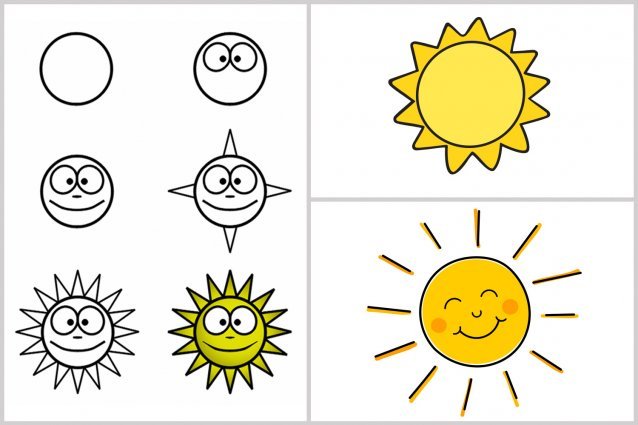
Children sometimes want to draw, but don't have the technique to do it. To help them, you can find on Mom for life Steps to follow for simple drawings. To begin with, draw shapes, draw lines and off you go! Children learn to draw a cat, a dog or a sun. Find the link to the site right here here !
Kidlee nannies love to draw!
Drawing is a fun and enjoyable exercise, so the more you practice the better! This is why the baby sitters Kidlee make sure to accompany the children in their awakening! And this by regularly practicing manual activities such as drawing, coloring and painting. You want to know more about supers childcare Kidlee ? Do not hesitate to contact us by clicking just HERE !


